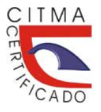PAUTAS PARA UN MEJOR MANEJO Y CONSERVACIÓN DEL ECOSISTEMA MANGLAR EN CUBA / GUIDELINES FOR BETTER MANAGEMENT AND CONSERVATION OF THE MANGROVE ECOSISTEM IN CUBA
Palabras clave:
Conectividad, Dinámica, Mortalidad, RehabilitaciónResumen
Los manglares son uno de los tipos de bosques más importantes por sus servicios ecosistémicos y roles ecológicos. Representan el 5 % de la tierra emergida de Cuba. Poseen una dinámica que depende críticamente del balance entre el agua dulce y aumento en el nivel del mar. Posen una alta conectividad con otros ecosistemas constituyendo parte de los primeros niveles de energía, aportando refugio a los primeros estadios de vida de animales terrestres y marinos. Sin embargo el manglar se degrada en el archipiélago cubano, se hace necesario estudiar las causas de su mortalidad y alternativas para su recuperación. El objetivo de la revisión es analizar los referentes investigativos del ecosistema manglar, dinámica, conectividad, impactos de la actividad antrópica, factores que influyen en la pérdida de cobertura, iniciativas de manejo y rehabilitación. Los métodos utilizados son teóricos y se destacan el análisis/síntesis y el inductivo/deductivo. Los principales hallazgos teóricos se refieren al carácter destructor de la actividad antrópica y como al mismo tiempo se diseñan metodologías que posibilitan al manglar recuperar su salud, se hace énfasis en la necesidad de conjugar los valores ambientales con el desarrollo socioeconómico de la comunidad adyacente al manglar.
Descargas
Citas
ADAMS, J.B. y HUMAN, L.R.D. (2016). Investigation into the mortality of mangroves at St. Lucia Estuary, South African. Journal of Botany, No. 8, p. 24-33.
ALCOLADO, P.M y MENÉNDEZ, L. (2006). Mortalidad masiva de manglares: un caso en el norte de Cuba. En MENÉNDEZ L. y GUZMÁN, J.M. (Eds.). Ecosistema de manglar en el Archipiélago Cubano. Estudios y experiencias enfocados a su gestión. La Habana: Ed. Academia. 320 p.
ALONGI, D. M. (2008). The effect of small-scale logging on stand characteristics and soil biogeochemistry in mangrove forests of Timor Leste. Orest.Ecology and Management. Vol. 255, No. 3-4, pp. 1359-1366.
ALONGI, D.M. (2002). Present state and future of the world’s mangrove forests. Environmental Conservation, No. 29, pp. 331-349.
BEGIN, C.…[et al.] (2014). Increase in sediment loads over coral reefs in Saint Lucia in relation to changes in land use in contributing watersheds. Ocean and Coastal Management. Vol. 95, p. 35-45.
BERGER, U…[et al.] (2006). Modelling secondary succession of neotropical mangroves: Causes and consequences of growth reduction in pioneer species. Perspec. Plant. Ecol. Vol. 7, pp. 243-252.
BOSSI, R. y CINTRÓN G. (1990). Manglares del Gran Caribe: hacia un manejo sostenible. Programa de las Naciones Unidas para el Desarrollo (PNUMA). p. 35.
BROWNING, T.N …[et al.] (2016). Linking land & sea: watershed evaluation and mineralogical distribution of sediments in eastern St. John, USVI. Caribbean Journal of Science.
CARDONA, P. y BOTERO, L. (1998). Soil Characteristics and Vegetation Structure in a Heavily Deteriorated Mangrove Forest in the Caribbean Coast of Colombia. Biotropica. Vol. 30, No. 1, p. 24-34.
CARVALHO, Amaral…[et al.] (2006). Late Holocene development of a mangrove ecosystem in southeastern Brazil (Itanhaém, state of Sao Paulo). Palaeogeogr., Palaeocl., Palaeoecol. Vol. 241, pp. 608-620.
CENTRO EUROPEO DE POSGRADO (2018). La definición conceptual de dinámica de ecosistemas [En línea.].Disponible en: https://www.ceupe.com/blog/que-son-las-dinamicas-de-los-ecosistemas.html. Visitado el 26 de enero de 2020.
CISSELL, J.R. y STEINBERG, M.K. (2018). Mapping forty years of mangrove cover trends and their implications for flats fisheries in Ciénaga de Zapata, Cuba. Environmental Biology of Fishes. Vol. 4, No. 7, p. 1-11.
COSTA-ACOSTA, J. …[et al.] (2014). Caracterización y estado de salud del manglar en el refugio de fauna El Macío, Granma, Cuba. Ciencia en su PC. Vol. 4, p. 2-19.
DANIELSEN, F. …[et al.] (2005). The Asiantsunami: a protective role for coastal vegetation. Journal Science. Vol. 10, pp. 643-678.
DAY, John W…[et al.] (1987). The productivity and composition of mangrove forests, Laguna de Términos, México. Aquatic Botany. Vol. 27, pp. 267-284.
DENIS, Dennis. 2020. Variación espacio-temporal de la respuesta espectral en manglares de La Habana, Cuba, a través de sensores remotos. Revista de Biología Tropical. Vol. 68, No. 1, pp. 321-335.
DONATO, D…[et al.] (2011). Mangroves among the most carbon-rich forests in the tropics (en línea). Nature Geoscience. Vol. 4, p. 293-298. Disponible en http://www.cebem.org/cmsfiles/publicaciones/MangroveCarbonStorage.pdf. Visitado el 26 enero de 2021.
DU J.G. …[et al.] (2015). Progress and prospects of coastal ecological connectivity studies. Acta Ecol Sin. Vol. 35, pp. 6923-6933.
ELLISON, J.C. (2008). Long-term restrospection on mangrove development using sediment cores and pollen analysis: A review. Aquat. Bot. Vol. 89, pp. 93-104.
ELLISON, A.M., y Farnsworth, E.J. (1996). Anthropogenic disturbance of Caribbean mangrove ecosystems: past impacts, present needs, and future predictions. Biotropica, No. 28, pp. 549-565.
ENGELHART, S.…[et al.] (2007). Mangrove pollen of Indonesia and its suitability as a sea-level indicator.Mar. Geol. Vol. 242, pp. 65-81.
ESCALERA GARCÍA, I. A. y RIVERA LÓPEZ, C. F. (2017). Mortalidad de mangles en Cabo Rojo, Puerto Rico. Centro Interdisciplinario de Estudios del Litoral. Mayagüez, PR: Universidad de Puerto Rico, 9.
FERREIRA, T…[et al.] (2007). Are mangrove forest substrates sediments or soils? A case study in southeastern Brazil. Catena. Vol.70, p. 79-91.
FOOD AND AGRICULTURE ORGANIZATION OF THE UNITED NATIONS (FAO) (2007). The world’s mangroves 1980-2005. FAO, Rome. FAO Forestry Paper. 153.
GALFORD, G.…[et al.] L, (2018). Cuban land use and conservation, from rainforests to coral reefs. Bulletim of Marine Science. Vol. 94, No. 2. DOI: 10.5343/bms.2017.1026.
GÓMEZ PAÍS, G (2005). Valoración económico-ambiental de recursos naturales seleccionados en la cuenca del río Guanabo. La Habana: Instituto de Geografía Tropical.
GONZÁLEZ, C.…[et al.], (2010). Late Holocene mangrove dynamics in the Colombian Caribbean: a history of human and natural disturbances. The Holocene.
GRIMSDITCH, G (2009). Complex root structure of Rhizophoramucronata stand, Gazi Bay, Kenya © Steven Bouillon, KU Leuven. Page 21: Mangrove forest on the west coast of New Caledonia© Dan Laffoley/ IUCN.
GUZMÁN MENÉNDEZ, J. M. y MENÉNDEZ CARRERA, L. (2013). Protocolo para el monitoreo del ecosistema de manglar. 1a ed. La Habana: Centro Nacional de Áreas Protegidas.
HARRIS, Tood …[et al.] (2017). Climate drivers of the 2015 Gulf of Carpentaria mangrove dieback. Earth Systems and Climate Change Hub Technical Report NESP Earth Systems and Climate Change Hub, Australia No. 2, pp. 345-394.
HIRALES COTA, M…[et al.]. (2010). Drivers of mangrove deforestation in Mahahual-Xcalak, Quintana Roo, southeast México. Ciencias Marinas. Vol. 36, No.2, pp. 147-159.
HOPPE SPEER, Sabine …[et al.]. (2011). The response of the red mangrove Rhizophoramucronata Lam. to salinity and inundation in South Africa. Aquatic Botany. Vol. 95, p. 71-76.
JIMÉNEZ, J. A.(1994). Los manglares del pacífico centroamericano. Heredia Costa Rica: Ed Fundación UNA.
KOVACS, John M. …[et al.] (2004). Estimating leaf area index of a degraded mangrove forest using high spatial resolution satellite imagery. Aquatic Botany. Vol. 80, p. 13-22.
KRAUSS, Ken W …[et al.] (2018). Ghost forest of Marco Island: Mangrove mortality driven by belowground soil structural shifts during tidal hydrologic alteration. Science. Vol. 212, p. 51-62.
LAFFOLLEY D. A. y GRIMSDITCH, G. (2009). The Managemen of Natural Coast Carbon Sinks. UICN, Gland, Switzerlend. Vol. 43, No. 34, p. 53.
LAPOINT, S…[et al.] (2015). Ecological connectivity research in urban areas. Funct Ecol. Vol. 29, pp. 868-878.
LEWIS, Roy (2005). Ecological engineering for successful management and restoration of mangrove forest. Ecological Engineering. Vol. 24, pp. 403-418.
LEWIS R. R. (2016). Stress in mangrove forests: Early detection and preemptive rehabilitation are essential for future successful worldwide mangrove forest management. Marine Pollution Bulletin. Vol. 109, No. 2, pp. 764-771.
LOVELOCK,Catherine …[et al.] (2009). Nutrient Enrichment Increases Mortality of Mangroves. PLoS ONE. Vol. 4, No. 5, p. 1-4.
LOVELOCK Catherine …[et al.] (2017). Mangrove dieback during fluctuating sea levels. Scientific Reports. Vol. 7, p. 1-8.
MCKEE, Karen (1996). Mangrove ecosystems: definitions, distribution, zonation, forest structure, throphicestructure, and ecological significance. En FELLER, I y SITNIK M(Eds.). MangroveEcology: A manual for a fieldcourse. Washington: Instituto Smithsonian. p. 1-6.
MENÉNDEZ CARRERA, L. y GUZMÁN, J., M. (2006). Ecosistema de manglar en el Archipiélago Cubano Estudios y experiencias enfocados a su gestión. La Habana: Ed Academia.
MILBRANDT, E.C. y TINSLEY, M.N. (2006). The role of saltwort (Batismaritima L.) in regeneration of degraded mangrove forests. Hydrobiology. Vol. 568, pp. 369-377.
MURDIYARSO, D. …[et al.] (2009). Carbon storage in mangrove and peatland ecosystems: A preliminary account from plots in Indonesia.Center for International Forestry Research Center for International Forestry Research CIFOR. Bogor Barat, Indonesia. p. 37.
NYBERG, J. …[et al.] (2001). Late Holocene Changes in Precipitation and Hydrography Recorded in Marine Sediments from the Northeastern Caribbean Sea. Quaternary Res. Vol. 56, p. 87-102.
PELÁEZ, O. (2021). ¿Cómo avanza la Tarea Vida y cuáles son los nuevos retos que nos impone el clima? Granma La Habana p.4.
RIVERA ARRIAGA …[et al.] (2020). Gobernanza y Manejo de las Costas y Mares ante la Incertidumbre. Una Guía para Tomadores de Decisiones. Universidad Autónoma de Campeche, Ricomar. p. 894.
RODRÍGUEZ, G. y SAMÓN, R. (2014). Instructivo técnico: Reforestación de manglares. 2014. S.l.: INAF.
RODRÍGUEZ LEYVA …[et al.] (2018). Propuesta de acciones para recuperar el bosque de manglar en la bahía de Guantánamo, Cuba. Revista Cubana de Ciencia Forestales (CEFORES) Vol. 6, No. 2, pp. 224-239.
ROIG VILLARIÑO …[et al.] (2013). Resiliencia de manglares en los paisajes naturales protegidos Rincón de Guanabo y Laguna del Cobre-Itabo, Ciudad de la Habana, Cuba. Acta Botánica Cubana. Vol. 215, No. 1, p. 61-74.
ROMAN, J. (2018). The ecology and conservation of Cuba’s coastal and marine ecosystems. Bulletin of Marine Science. Vol.94, No. 2, p. 149-169.
ROMERO, Flores …[et al.] (2014). Insectos xilófagos y su influencia en la muerte de mangle en Barra Salada, del Área Natural Protegida “Los Cóbanos”, Sonsonate y Bahía de Jalisco, Usulután, El Salvador. Ingeniería en Agronomía. Universidad de El Salvador. Facultad de Ciencias Agronómicas. Departamento de Protección Vegetal. p.97.
ROSSI, Elizabeth (2018). The Role of Multiple Stressors in a Mangrove Die-off: A Case Study in The Bahamas Archipelago.EEUU 225 p Tesis en opción al grado de Doctor en Ciencias Doctorado. Centro de Estudios Marinos Cabo Cañaveral.
RULL, V (1998). Modern and Quaternaypalynological studies in the Caribbean and Atlantic coasts of northern South America: a paleoecological-oriented review. Boletín de la Sociedad Venezolana de Geólogos. Vol. 23, p. 5-24.
SHEAVES, M. (2009). Consequences of ecological connectivity: the coastal ecosystem mosaic. Mar Ecol Prog Ser. Vol. 391, p. 107-115.
SPALDING, Mark …[et al.] (2010). World atlas of mangroves. The Nature Conservancy. International Society for Mangrove Ecosystems. Vol 1, No. 2, p.1-304.
TORRES CALA, Y. (2018). Acciones encaminadas a reducir la vulnerabilidad de un sector de manglar al sur de la provincia de Artemisa, Cuba. Poeyana. Vol.6, No. 2, p. 162-171. Disponible en http://cfores.upr.edu.cu/index.php/cfores/article/view/337/
URIBE, P.J. y URREGO, L.E. (2009). Gestión ambiental del ecosistema de manglar. Una aproximación al caso colombiano. Rev. Gestión y ambiente. Vol. 12, No. 2, p. 57-72.
URREGO, Ligia …[et al.] (2018). Colombian Caribbean mangrove dynamics: anthropogenic and environmental drivers. Boletín de la Sociedad Geológica Mexicana. Vol. 11, No. 12 p. 133-145.
Publicado
Cómo citar
Número
Sección
Licencia
Derechos de autor 2021 Universidad&Ciencia

Esta obra está bajo una licencia internacional Creative Commons Atribución-NoComercial-CompartirIgual 4.0.





















